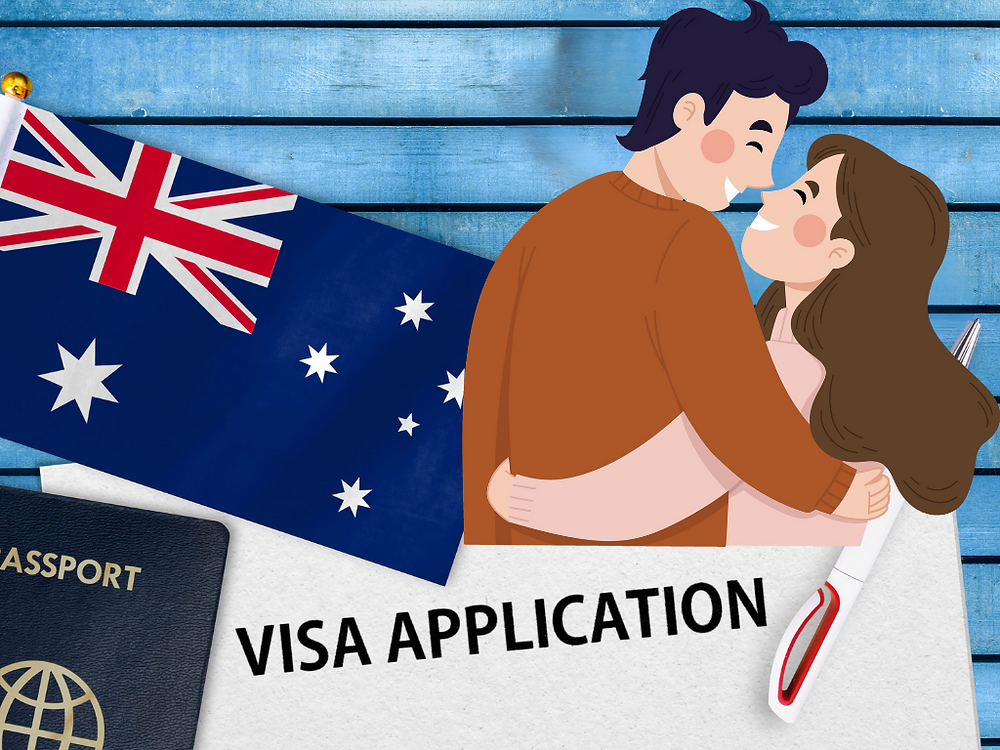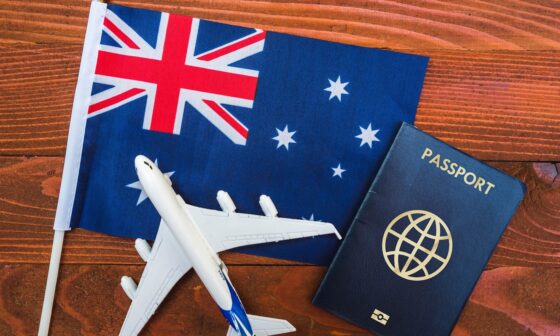When you want to start a new chapter of your life in Australia with the person you love, acquiring a marriage visa can be difficult. I’ve been on this trip myself, and I understand how difficult it can be to manage the complexities of the Australian immigration system. However, with proper assistance, this procedure can be made more manageable.
In this article, I will guide you step by step on how to apply for an Australian marriage visa, ensuring a smooth and successful application process.
Understanding Australia’s Marriage Visa
The Australia Marriage Visa, also known as the Partner Visa, permits the spouse or de facto partner of an Australian citizen, permanent resident, or qualified New Zealand citizen to reside in Australia. This visa has two stages: temporary (Subclass 820) and permanent (Subclass 801). Let’s take a deeper look at what you should know:
- Temporary Visa (Subclass 820): This is the initial stage of the partner visa application. It allows you to stay in Australia temporarily while your permanent visa is being processed.
- Permanent Visa (Subclass 801): Once your temporary visa has been approved and you have satisfied all of the requirements, you can apply for a permanent visa, which will allow you to stay in Australia indefinitely.
A Step-by-Step Guide to Applying for an Australian Marriage Visa
#1. Determine Your Eligibility
Before you begin the application procedure, you must check your eligibility for the Australian Marriage Visa:
- Relationship Requirements: You must be married or in a de facto relationship with an Australian citizen, a permanent resident, or an eligible New Zealand citizen. For a de facto partnership, you must have lived together for at least 12 months.
- Health and Character Checks: Both you and your spouse must meet certain health and character standards. This normally entails passing medical exams and providing police clearance certificates from countries where you’ve resided for 12 months or more in the last ten years.
#2. Gather Essential Documents
Having the required papers available is important to a smooth application process.
- Proof of Relationship: This includes marriage certificates, joint financial records, photos, and statements from friends and relatives confirming your relationship’s authenticity and continuation.
- Identity Documents: Please include copies of your passport, birth certificate, and any other necessary identification documents.
- Health and Character Documents: Medical exam findings and police clearance certificates, if needed.
#3. Submit Your Visa Application
Once your documents are complete, you can submit your application:
- Online Submission: The easiest approach to apply is through the ImmiAccount portal on the Department of Home Affairs website. This website allows you to upload all necessary documents and pay the application fee.
- Application price: The price for the Partner Visa (Subclass 820/801) is around AUD 7,850. Remember to preserve a copy of your payment receipt for your records.
- Processing period: The processing period for the temporary visa can range from 18 to 21 months, while the permanent visa normally takes another 10 to 14 months after the temporary visa is granted.
#4. Understand the Two-Stage Process
The Australian Marriage Visa process has two stages:
- Stage 1: Temporary Visa (Subclass 820): After completing your application and meeting the basic conditions, you will be awarded a temporary visa, which allows you to stay in Australia while your permanent visa is being processed.
- Stage 2: Permanent Visa (Subclass 801).: You can apply for a permanent visa two years after completing your original application, as long as your partnership is still active and you complete all other requirements.
#5. Use a Visa Application Template
To guarantee that you do not overlook any important stages or papers, I recommend using an Australian Marriage Visa Application Template. This template will walk you through each stage of the application process, allowing you to arrange your paperwork, track your application status, and ensure a smoother procedure.
Australian Marriage Visa Application Template
Common Mistakes to Avoid When Applying for an Australian Marriage Visa
When applying for an Australia Marriage Visa, you should be aware of frequent mistakes that might cause your application to be delayed or denied. Here are some of the most common faults and how to avoid them.
#1. Incomplete or insufficient documentation
One of the most common causes of delays or refusals is a failure to present all of the required paperwork or insufficient evidence of your relationship. This can include missing financial documentation, insufficient proof of cohabitation, and incomplete applications.
Before submitting your application, please carefully study the list of required papers. Include specific details about your partnership, such as joint financial accounts, utility bills, photos, and personal statements from friends and relatives. Double-check that all forms are filled completely and entirely.
Advertisements
#2. Provide Inconsistent Information
Inconsistencies between your visa application and accompanying documentation can raise red flags, resulting in delays or refusals. For example, differences in names, dates, or addresses between your application and your documentation can cause problems.
Ensure that the information presented is consistent throughout all documents. Before submitting your application, thoroughly review it and cross-check the details with the accompanying documentation.
#3. Not meeting the health and character requirements
Neglecting to meet Australia’s health and character requirements may result in your application being rejected. This includes failing to provide required medical examinations or police clearance certificates from countries where you have lived for an extended period.
Complete all essential health examinations and get police certificates as soon as possible. To avoid delays, ensure that these documents are up-to-date and provided with your application.
#4. Underestimating Processing Times
Many applicants misunderstand the length of the visa process and base their plans on unrealistic timetables. This might cause frustration and issues, particularly if your visa is not granted as expected.
Be realistic about processing times. The full process, which includes both temporary and permanent visas, can take more than two years. Plan accordingly and avoid making big life decisions based on expected visa clearance dates.
#5. Not Providing Enough Evidence of Relationship
Failure to present sufficient proof to demonstrate that your connection is genuine and ongoing is a common basis for visa refusal. The Department of Home Affairs conducts a detailed review of relationship evidence.
Advertisements
Provide a diverse range of proof, such as joint bank accounts, lease agreements, images from various phases of your relationship, social media contacts, and comments from friends and relatives. Ensure that the evidence spans the whole duration of your connection.
#6. Applying Late
Waiting until the last minute to apply for your marriage visa can cause delays, especially if there are flaws with your application that need to be addressed.
Begin the application procedure as soon as you meet the eligibility requirements. This allows you plenty of time to gather documentation, address any concerns, and prepare for the lengthy processing delays.
#7. Ignoring Visa Conditions
Some applicants do not comprehend or comply with the rules of their visa, such as employment privileges, health insurance requirements, or reporting duties. Noncompliance might lead to visa termination.
Make sure you understand all of the terms and regulations that come with your visa. For example, if your temporary Partner Visa is approved, you may be able to work; however, you must also meet any health insurance requirements. Keep track of all your duties and make sure you meet them.
#8. Failure to seek professional advice when needed
Navigating the visa application procedure without expert assistance can be difficult, particularly if your situation is complicated. This can result in mistakes or lost opportunities to improve your application.
If you are unsure about any part of your application, consult a qualified migration agent or immigration lawyer. They can guide you through the procedure, avoid typical errors, and increase your chances of success.
Avoiding these typical blunders increases your chances of a smooth and successful Australian Marriage Visa application procedure. Taking a rigorous, structured, and proactive approach will help you traverse this critical step toward your future in Australia.
Common Questions About the Australian Marriage Visa
How long does it take to process an Australian Marriage Visa?
The processing time for the temporary Partner Visa (Subclass 820) is normally 18 to 21 months, while the permanent Partner Visa (Subclass 801) takes an additional 10 to 14 months after the temporary visa is issued.
Is it difficult to obtain a spouse visa in Australia?
Obtaining a spouse visa in Australia, while not impossible, can be difficult due to extensive documentation and stringent qualifying standards. The process entails giving substantial evidence of your relationship, passing health and character examinations, and maybe waiting for extended processing timeframes. The key to success is thorough preparation, ensuring that all essential paperwork is correct and complete, and remaining patient throughout the procedure.
Can Marrying an Australian Get You a Visa?
Marriage to an Australian citizen, permanent resident, or eligible New Zealand citizen qualifies you to apply for a Partner Visa, which allows you to live in Australia. However, marriage does not guarantee you a visa. You must complete the official application process, which includes demonstrating the sincerity of your relationship, meeting health and character criteria, and adhering to visa limitations.
Can I work in Australia while on a temporary partner visa?
Yes, after your temporary Partner Visa (Subclass 820) is approved, you can work in Australia. You also have access to Medicare, Australia’s healthcare system.
What happens if my relationship ends before the permanent visa is granted?
If you discontinue your relationship before receiving your permanent visa, you must notify the Department of Home Affairs. Your visa status will be reviewed, and your visa may be canceled unless there are special circumstances.
Can I include my children on the visa application?
Yes, dependent children can be added to your Partner Visa application. They must meet the same health and character requirements as the principal candidates.
Do I have to be in Australia to apply for the Partner Visa?
You can apply for the Partner Visa from within or outside of Australia. The method and conditions are largely similar; however, the visa subclass will differ.
Template for the Australian Marriage Visa Application Process
To make your application process easier, I’ve produced an Australia Marriage Visa Application Template. This template will assist you in keeping track of the required documents, monitoring the status of your application, and ensuring that all requirements are completed at each stage of the process.
Australian Marriage Visa Application Template
Key Takeaways
- Applying for an Australian marriage visa consists of two steps: obtaining a temporary visa, followed by a permanent visa.
- Comprehensive documentation, particularly proof of relationship, is essential for a successful application.
- To qualify for the visa, both you and your partner must pass health and character assessments.
- A visa application template will help speed up the process and guarantee no details are missing.
- The complete process could take more than two years, so patience and preparedness are required.
Conclusion
Applying for an Australian marriage visa is a significant step toward establishing a life together in Australia. Follow the processes mentioned in this article, use a comprehensive visa application template, and grasp the requirements to confidently traverse the process. Are you ready to begin this exciting chapter in your life?
Advertisements



